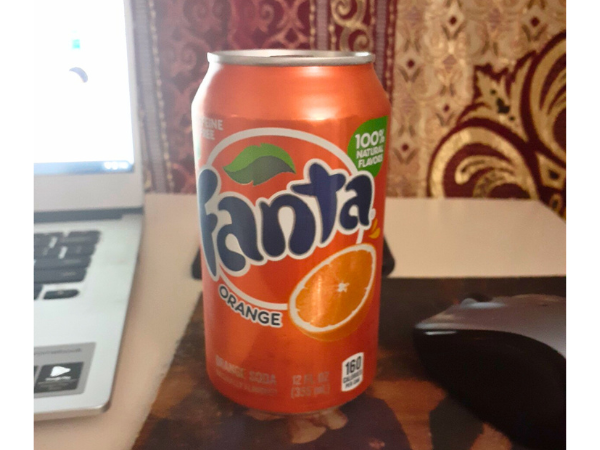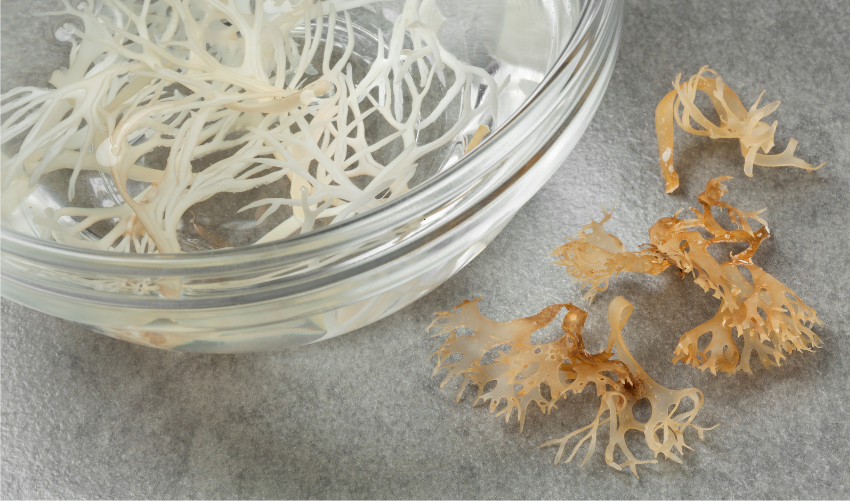This guide we’ll break down the benefits and drawbacks of Fanta, helping you make an informed choice for your family.
You’ll discover what’s really in that can, how it might affect your child’s health, and whether it can fit into a balanced diet.
Understanding Fanta: More Than Just A Fizzy Drink
This drink is more than just a fizzy beverage. It is a fruity carbonated drink that brings joy to many children. Yet, it has its pros and cons.
What Is Fanta?
Fanta is a global brand of fruit-flavored soft drinks. It is known for its vibrant colors and effervescence. The drink offers a variety of flavors, with orange being the most iconic.
- Fruity Carbonated Beverage: Fanta is packed with fruity flavors.
- Global Brand: It is enjoyed in many countries around the world.
- Variety of Flavors: Fanta comes in different fruit flavors like grape, strawberry, and lemon.
- Appeal to Children: Its sweet taste and bright colors attract kids.
- Health Concerns: Parents worry about the sugar content and artificial ingredients.
Fanta’s fruity taste and bright colors appeal to children. This makes it a popular choice among kids.
Common Parental Dilemma
The sweet taste and fun colors can be tempting for kids. However, parents often worry about health concerns. The sugar content in Fanta is high. This can lead to weight gain and dental issues. Artificial ingredients also raise red flags for many.
- Health Concerns: Parents worry about sugar and artificial ingredients.
- Moderation: Allowing Fanta in moderation can be a balanced approach.
- Alternative Options: Consider healthier drink choices like water or natural juices.
It is essential to discuss these concerns with your children. Teach them about healthy choices. Enjoying Fanta occasionally can be fun. Just keep the focus on balance and health.
What’s In Fanta? A Look At Key Ingredients
In this section, we will explore the key ingredients in Fanta, focusing on their implications for your child’s health.
High Sugar Content
One of the most significant concerns with Fanta is its high sugar content. Sugar provides a quick energy boost but comes with drawbacks. Many drinks, including Fanta, are high in added sugars.
Here are some key points to consider:
- Added Sugars:A primary ingredient contributing significant calories from sucrose and/or high-fructose corn syrup.
- Typical Amount:A standard 12 fl oz (355ml) can of Fanta Orange can contain over 40g of sugar.
- Empty Calories:Fanta provides energy without essential nutrients like vitamins, minerals, or fiber.
This high sugar content can lead to health issues such as:
- Weight gain
- Tooth decay
- Increased risk of diabetes
For parents, understanding the impact of sugar is crucial. Limiting sugary drinks can promote better health in children.

Artificial Additives
Fanta contains several artificial additives that enhance its flavor and appearance. These include artificial colors, flavors, and preservatives. While they make the drink appealing, they may raise concerns for some parents.
Key artificial ingredients include:
- Artificial Colors:Uses synthetic food dyes like Sunset Yellow (Yellow 6), Tartrazine (Yellow 5), Red 40, and Brilliant Blue.
- Artificial Flavors:Contains lab-created flavor compounds that mimic natural fruit tastes.
- Preservatives:Includes ingredients like Potassium Sorbate or Sodium Benzoate to extend shelf life.
These additives can lead to various reactions in sensitive individuals. Some people may experience:
- Allergic reactions
- Hyperactivity in children
- Digestive issues
Most Fanta varieties are caffeine-free, a common concern for children’s beverages. While this might be a plus, understanding the full ingredient list is essential for making informed choices.
Benefits Of Fanta For Kids
This popular soda has its perceived benefits. Here are some of the pros that Fanta may offer for kids.
Occasional Treat & Enjoyment
This soda can be enjoyed in moderation as a special treat during celebrations or social gatherings. Here are some reasons why it can be a fun choice:
- Temporary Refreshment:Its fizziness and sweetness can provide a temporary sense of refreshment.
- Social Aspect:Sharing a Fanta at a party can create happy memories.
- Variety of Flavors:Fanta comes in many flavors, making it exciting for kids.
Many parents choose to serve Fanta during special occasions. It can make events more festive. For example, kids may enjoy Fanta during birthday parties or family gatherings.
No Caffeine Content
Another benefit of Fanta is its lack of caffeine. Unlike some other sodas, the absence of caffeine makes it suitable for all ages. This is particularly important for children. Caffeine can cause jitters or sleep disturbances.
- Less Likely to Cause Jitters:Kids can enjoy Fanta without feeling anxious.
- No Impact on Sleep:Fanta won’t disrupt a child’s sleep schedule.
- Peace of Mind for Parents:Parents can relax knowing their kids are safe.
Fanta can be a fun option for children, especially during special occasions This makes it a more suitable choice compared to other sugary drinks.
Potential Health Risks For Children
Fanta, like many sugary drinks, can pose several health issues for kids. Understanding these risks helps parents make informed decisions.
Impact Of High Sugar Intake
High sugar intake from drinks like Fanta can lead to several health problems in children. The main concern is childhood obesity. Excessive consumption contributes to a calorie surplus and increases the risk of weight gain. Here are some potential effects:
- Type 2 Diabetes Risk:Frequent high sugar intake can lead to insulin resistance, increasing diabetes susceptibility.
- Dental Caries:Sugars feed oral bacteria, leading to acid production that erodes tooth enamel and causes cavities.
- Energy Spikes and Crashes:High sugar drinks provide quick energy, but this can lead to fatigue and irritability.
To illustrate the impact of sugar, consider the following table:
| Sugar Content (grams) | Health Impact |
|---|---|
| 1 can of Fanta (12 oz) | About 44 grams of sugar |
| Daily recommended sugar intake for children | About 25 grams (6 teaspoons) |
Drinking Fanta regularly can easily push children over the recommended sugar limit. This can lead to long-term health issues.
Concerns With Artificial Additives
Fanta contains artificial additives that can also pose risks. Some of these additives are food dyes, which some studies link to behavioral changes in children. Here are some concerns:
- Hyperactivity:Some artificial food dyes, like Yellow 5, Yellow 6, and Red 40, have been linked to increased hyperactivity and attention issues in sensitive children.
- Behavioral Changes:Parents report irritability, mood swings, or sleep disturbances in some children after consuming these dyes.
- Allergic Reactions:Certain dyes, such as Yellow 5, may trigger allergic reactions in susceptible individuals.
Understanding these additives helps parents make better choices. The risks associated with artificial ingredients can impact children’s health and behavior. Being aware of what is in Fanta is essential for responsible parenting.
Nutritional Facts Vs. Daily Guidelines
Fanta is a popular drink, but its nutritional value is questionable. Parents need to weigh the pros and cons of allowing their children to consume it.
Exceeding Sugar Recommendations
The American Heart Association (AHA) has clear guidelines on sugar intake for children. They recommend that children aged 2-18 consume less than 25 grams (6 teaspoons) of added sugar daily. A single 12 oz can of Fanta significantly exceeds this daily limit, often containing over 40g of sugar. This means that just one can can push kids well beyond safe sugar levels.
Here are some important points to consider:
- Fanta’s Contribution: One can can contain over 40 grams of sugar.
- Health Risks: Excessive sugar can lead to obesity, diabetes, and tooth decay.
- Daily Limits: Drinking just one can of Fanta can exceed the AHA’s recommendations.
Clearly, Fanta provides excessive sugar. Parents should monitor their children’s intake to avoid health issues.
Empty Calories & Nutrient Displacement
Fanta offers virtually no vitamins, minerals, or fiber. This lack of nutrients means it displaces healthier beverage choices. When children drink soda, they might fill up on empty calories instead of nutritious foods.
Consider the following:
- Reduced Nutrient Intake: Soda can fill children up, causing them to eat less nutritious food.
- Empty Calories: Fanta does not provide energy that is beneficial for growth.
- Healthier Choices: Water, milk, or 100% fruit juice are better options for hydration.
Parents should encourage healthier drink choices. This helps ensure children get the nutrients they need for their growth and development.





Leave a Reply